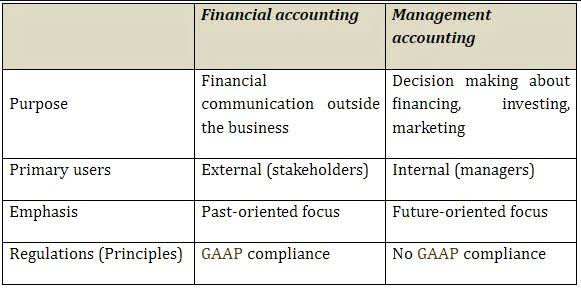
Providing ongoing training ensures the team is up-to-date on the latest compliance requirements and best practices in legal accounting. It helps maintain the firm’s financial integrity and adherence to legal standards. Another common mistake is failing to account for client retainers correctly, which often leads to under-reporting of liabilities.

Revenue

Ultimately, mastering general ledger accounting gives law firms the tools to thrive in a competitive landscape, ensuring long-term stability and success. Bookkeeping for lawyers will always involve using and managing a general ledger. A general ledger is a complete record of a law firm’s financial transactions, separated into transaction types, including assets, liabilities, revenues, expenses, and owner’s equity. The general ledger will also be the basis for your double-entry bookkeeping system.

Learn How To Read the Three Key Financial Statements
Whether billing clients, disbursing funds from trust accounts, or allocating expenses to specific matters, meticulous attention to detail is essential. By establishing clear policies and procedures for transaction recording and leveraging automation tools where possible, law firms can minimize errors and ensure adherence to regulatory requirements. General ledger accounting is a crucial part of keeping a law firm’s finances organized and accurate. However, mistakes in general ledger accounting can lead to serious financial discrepancies, legal compliance issues, and inefficiencies that may affect a firm’s stability. Whether it is misclassifying transactions, not reconciling accounts regularly, or mishandling trust funds, these errors can impact a law firm’s financial stability and reputation.
Best Legal Accounting Software for Lawyers
You need to check if your client wants to separately keep track of filing fees, medical records, travel & other expenses. But having up-to-date and accurate bookkeeping records and leveraging professional accountants experienced in accounting for law firms is key to unlocking law firm growth and financial success for your practice. InvoiceSherpa supports accounting for law firms by saving you time and energy, increasing your cash flow, and getting invoices paid faster.
Income and Expense Accounts
- In addition to standard categories for assets, liabilities, and equity, law firms must incorporate specialized accounts for client funds held in trust, client billings, and case-related expenses.
- In addition to the above accounting principles, it’s also important for lawyers to familiarize themselves with key financial statements (i.e., reports summarizing detailed financial accounting information about your firm).
- When setting up your firm’s chart of accounts, the details matter, so be sure to review each item to make sure that it is always properly attributed in your accounting system.
- They can help level up your firm and make the legal accounting process even smoother by adding legal accounting and legal practice management software to your firm’s toolkit.
- It follows the accounting equation format, with assets listed on the left side and liabilities and stockholders’ equity listed on the right side.
- If you’re seeking a unified solution for case management and legal accounting, Clio could be the perfect fit.
- This includes assigning clear responsibilities, segregating duties, and regularly reviewing and reconciling accounts.
Law firm accounting can unlock opportunities for business growth and financial success when you put your law firm’s financial data to good use. Properly tracking billable hours and expenses is necessary for law firms to accurately record law firm revenue, issue correct invoices, and maintain financial records. Errors in tracking can lead to client disputes, lengthy collections processes, and lost revenue. Plus, falling behind on tracking expenses can impact the earning retained earnings potential of a law firm when you consider how some jurisdictions calculate the payout after expenses or liens have been deducted.
- Book your demo today to see how Clio Accounting can manage your bookkeeping and accounting from the same place you manage everything else for your firm.
- Accounting knowledge empowers firms to better manage relationships with banking institutions, abide by various ethical and regulatory guidelines, and prepare GAAP-compliant tax returns.
- Technology can make accounting processes—including setting up your law firm chart of accounts—easier, more efficient, and more accurate for law firms.
- Journals are used to record transactions as they occur, in chronological order.
- A unique aspect of law firm accounting is client trust accounting, which involves managing funds received on behalf of clients.
Setting Up Your General Ledger
- Creating an accurate, detailed legal chart of accounts is an important tool to give you an accurate picture of where your firm’s financials stand.
- You can modify the chart of accounts in a generic accounting platform like Quickbooks Online.
- Create a comprehensive law firm chart of accounts tailored to your legal practice’s specific needs.
- Your best bet is likely to hire both a legal bookkeeper and a legal accountant.
- Reporting will give you the data you need to improve your processes and billing, track your goal progress, and improve your firm’s financial stability.
- While general accounting solutions can help any business streamline its processes, they aren’t built to accommodate the unique accounting needs of law firms (such as trust accounting).
Most firms will need three business bank accounts at a minimum—checking, savings, and a separate IOLTA or trust account. Without the proper business bank accounts, you risk inaccurate bookkeeping, messy law firm chart of accounts records, and potential compliance violations regarding trust funds. As previously noted, trust accounting is the process of law firms tracking and monitoring client funds that have been held in trust. As an example, LawPay, an online payment platform built for lawyers, automatically enforces the separation of business and client funds throughout the billing and collection process.

— Transaction Examples

When you pay the bill, your cash account balance decreases and your utility expenses rise. You’d record that as a credit to cash, an asset sub-account, and a debit to utility expense, an expense sub-account. If your firm pays that bill with Law Firm Accounts Receivable Management a credit card instead, the transaction would involve a credit to the credit card account on the liability side, plus a debit to utility expense. For example, if your income statement accounts show a lower-than-expected profit, the general ledger can help you identify the specific transactions that contributed to this shortfall. Perhaps there was an error in recording a client payment or an expense was incorrectly categorized. When setting up your firm’s chart of accounts, the details matter, so be sure to review each item to make sure that it is always properly attributed in your accounting system.
